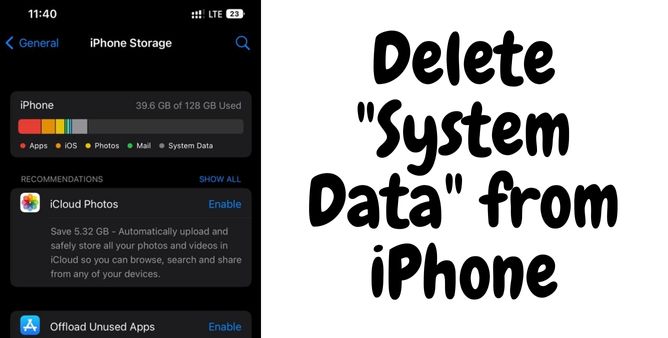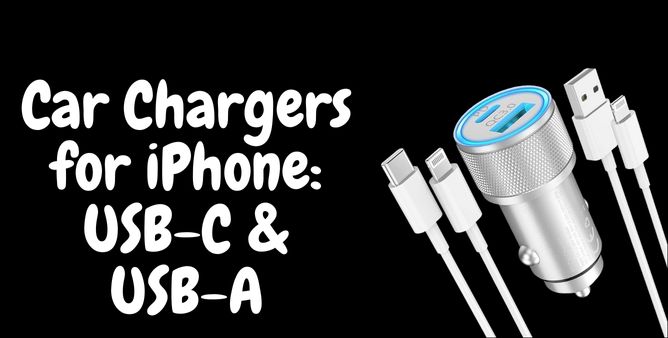Table of Contents Show
Have you ever come across the situation on your iPhone, when trying to install Apps or download files; an iPhone Storage Running Out pop-up appears on the screen? That means the iPhone is running low, the best way to check what you can delete to make the iPhone more spacious is by heading to Settings and then General > Storage. Here you will see Storage is breakdown into various categories Apps, iOS, Photos, Mail, and System Data which was previously known as “Other” in earlier iOS versions
However, you might have been frustrated about the huge chunk labeled as “System Data”, at the same, unfamiliar with what it is supposed to mean. Being a mysterious and confusing section there’s no answer for how to get rid of it. But eventually, we have made a complete guide on how to delete other storage on iPhone 14 series.
How to Delete System Data Storage on iPhone 14, iPhone 14 Pro, iPhone 14 Plus, iPhone 14 Pro Max
In this article, we will make you familiar with the steps to delete other storage on all iPhone 14 series. But before that let’s understand, what is System Data(Other) on iPhone.
What Is iPhone System Data Storage?
The iPhone’s Other storage is huge, now labeled as System Data is comprised of Logs, System Caches, Siri Voices, Updates, and many more. It ranges between 5-20GB, but if it goes over and above 20GB, you might encounter iPhone Keeps Freezing And Lagging. The biggest reason behind System Data growing out is streaming lots of music and videos, mainly downloaded from Music, and TV. But streams come along with caches to assure smooth playing and those are categorized under the System Data.
On the other hand, Safari’s cache keeps on frequently growing and as a result of all together fills up lots of storage. However, your latest iPhone is supposed to manage the caches to keep everything fine, but sometimes it goes in the opposite direction.
The Type Of “System Data” Storage And How To Clear It
It’s a tough task to precisely determine what stuff is categorized as System Data Storage. Here are some common culprits and identified ways to delete iPhone’s System Data Storage.
Old iMessages And Text Messages
Despite having an in-built separate Message category in the iPhone storage, Old Message can enroll the storage in the System Data. If you feel it’s not important, you can configure them to delete automatically after the set amount of time.
- Navigate to the Settings App > Messages.
- Search and select Keep Messages under Message History.
- Configure them to automatically delete messages after 30 Days, 1 Year, or Forever.
Safari Cache And Website Data
Not to mention, Safari is the default web browser on every Apple Product. Show the result is designed to store the files on the device for later usage. And in case it’s remained unchecked in the iPhone settings, the cache, data, and files may capture the big space under the System Data Storage. Here is what can do to delete System Data Storage On iPhone 14, iPhone 14 Pro, and iPhone 14 Pro Max.
- Go to Settings App.
- Swipe down and select Safari.
- Hit Clear History And Website Data.
Mail App Cache And Files
Another application that you must look at is the Mail App. Because, unlike, Safari it stores the Cache and all associated files in the System Data. At this point, we suggest you remove all email account from the iPhone and then re-add it.
- To manage all the email accounts, go to Settings App.
- Search and select Passwords & Account.
- Thereafter, select the Account and delete it.
To Re-Add,
Go to Settings > Password & Account > Add Account. On the next page, you will receive a list of Apple’s compatible providers. In case the associated Email Account doesn’t fall under the list, choose Other. Now simply follow the on-screen instruction.
Streaming App Cache File
Nowadays there are multiple apps streaming apps like Spotify, Netflix, etc are designed well to stream smoothly. As of now and forever, they also come along with a cache to load up the content rapidly. And that’s where it acquires the storage under the System Data.
At this point Delete System Data Storage On iPhone 14, iPhone 14 Pro, and iPhone 14 Pro Max; Offload The Individual App!
- Head to the Settings App > General.
- Choose iPhone Storage > select desired App.
- Tap Offload on the individual app.
That’s It! These are some of the identical ways to delete System Data on all iPhone models as iPhone’s System Data is huge.
Still Having Issue With System Data Storage?
All of the above-mentioned instructions are followed and still, the System Data Storage is consuming your iPhone 14 Series. We recommend closing the current running Browser. At the same running too many applications in the Background can suddenly impact the performance of iPhone 14 Series.
Similarly, reset the iPhone but before that, never forget to create a Backup. After you can take the help of Apple Support Team to get the more deep knowledge about it.
Delete Other Data Revamped As System Data!
This is how firmly you can delete System Data to make the iPhone run smoothly without any kind of freezing and lagging.
Why Is My iPhone System Data Is So High?
There are various reasons for system data is soo high, but the most common one is Streaming Video, Music, and then Safari Cache.
More Posts,




